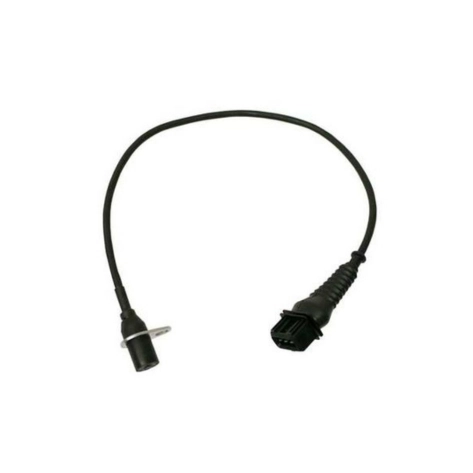This blog post covers the P0339 check engine light code and how the engine of your car’s Crankshaft Position Sensor (CPS) is related to it. This code denotes a problem with the CPS circuit, a vital component required for your engine to run smoothly.
If the CPS malfunctions, your engine will not start. You can experience intermittent problems, including the engine stalling or failing to start occasionally. If you have observed these issues, the P0339 error code can be the cause.
However, this code shouldn’t overwhelm you. In this comprehensive guide, we will examine the crankshaft position sensor‘s operation, define the P0339 code, and discuss its causes. Along with going over common symptoms and probable causes, we’ll also walk you through the diagnostic process to find and fix the issue. We’ll also provide some helpful maintenance tips to help you avoid problems in the future.

Genuine BMW crankshaft position sensor
Crankshaft Position Sensor — Know everything about it!
The engine management system in your car depends heavily on the Crankshaft Position Sensor, also known as the CPS or CKP. This tiny electronic device monitors the speed and rotation of the crankshaft and feeds vital information to the powertrain control module (PCM).
The crankshaft sensor is situated next to the reluctor ring, also known as the sensor wheel, and can be found near the crankshaft at the front or rear of the engine. The reluctor ring, usually integrated with the crankshaft, comprises several teeth with unique shapes and a gap indicating a full revolution.
Visit our guide about the crankshaft position sensor’s role in engine operation if you still have some questions. It is a must-read when diagnosing the DTC P0339!
Types of CKP Sensors
There are two main types of crankshaft position sensors used in vehicles. Let’s examine each type to understand its working mechanism.
Inductive Sensor — This type of sensor uses a magnet wrapped around a coil to detect the rotation of the sensor wheel mounted on the crankshaft. As the teeth pass near the magnet, they create a difference in the magnetic field, inducing an AC voltage (alternating current voltage) signal into the coil. The powertrain control module (PCM) processes this signal to determine the crankshaft position and rotational speed.
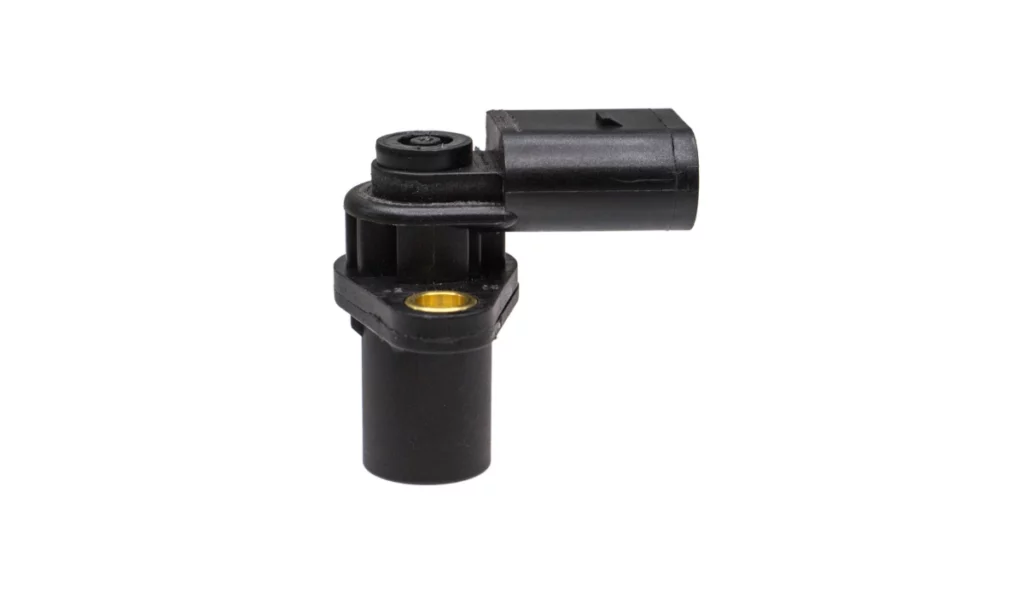
Crankshaft position sensor from Rein Automotive
Hall Effect Sensor — This type of sensor employs a Hall effect integrated circuit to monitor the crankshaft’s rotation. The Hall effect is a phenomenon that produces a voltage across a conductor, known as a Hall element or Hall plate, when it is exposed to a change in magnetic field. This sensor then sends a digital signal to the PCM to calculate the crankshaft’s position and rotational speed.
How does the Crankshaft Position Sensor (CPS) work?
Fundamentally, the Crankshaft Position Sensor (CPS) provides exact information about the position and rotational speed of the crankshaft to the Powertrain Control Module (PCM).
These sensors usually output a 5V or 12V voltage signal to the PCM. The PCM needs this signal to determine the best activation time for the fuel injector and spark plug into the engine’s cylinders, ensuring effective combustion and engine performance.
The CPS operates using a magnet wrapped around a coil or a Hall-effect sensor close to the sensor wheel. When the crankshaft rotates, the teeth on the reluctor ring travel past the sensor, either modifying the magnetic field or activating the Hall-effect sensor. By capturing these variations or signals, the CPS can precisely calculate the crankshaft’s position and speed.
The PCM receives this position and speed data. It uses it to calculate important engine parameters like RPM and timing for vital operations like fuel injection and ignition timing, providing accurate data essential to an efficient engine management system.
What is the P0339 Code?
The P0339 code is a generic diagnostic trouble code (DTC) generated by the vehicle’s onboard diagnostic system. It indicates an intermittent crankshaft position sensor (CPS) circuit A issue. This fault can lead to recurring disruptions in the signal transmission from the CPS to the powertrain control module (PCM).
How does the P0339 Code trigger?
The P0339 code is triggered when the powertrain control module (PCM) detects an intermittent or erratic signal from the crankshaft position (CKP) sensor. This sensor is crucial for providing the Powertrain Control Module (PCM) with accurate information about the crankshaft’s rotational position and speed. When the sensor fails to provide a consistent signal, it indicates a potential malfunction or irregularity in sensor operation.
Can I drive with a P0339 code?
We don’t recommend driving your vehicle when detected with a P0339 code. This trouble code can leave you stranded on the road, preventing you from starting the engine or experiencing unexpected stalling. It is generally advisable to address the issue as early as possible.
Symptoms of the P0339 Code
Now that you know the crankshaft position sensor (CPS), its types, working principle, the P0339 code, and how it is triggered, let’s look at the symptoms attached to this issue. These are the symptoms of the P0339 code.
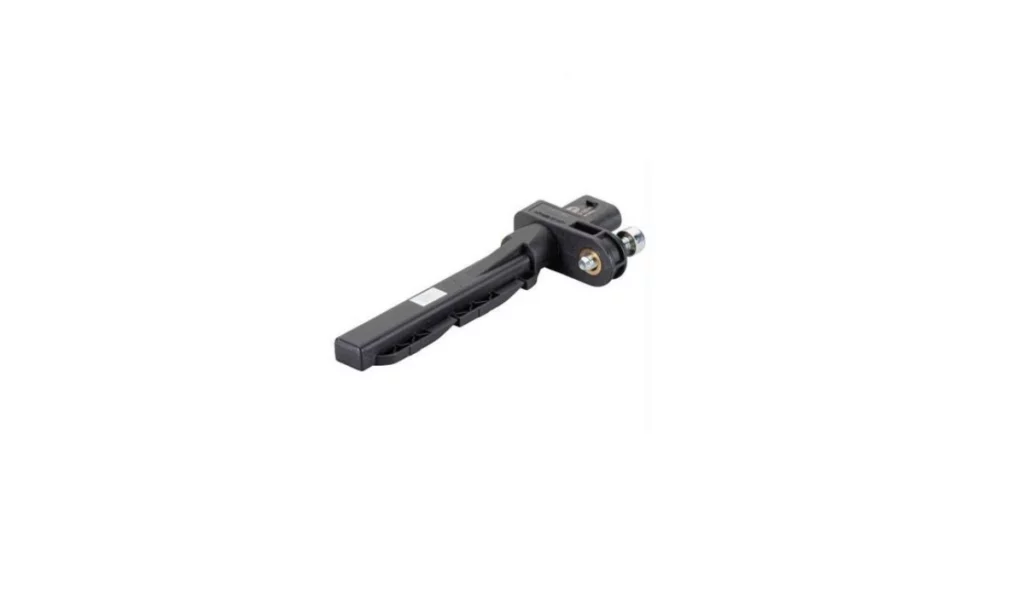
Crankshaft position sensor from Hella
Check Engine Light Illumination
One of the most obvious signs of a crankshaft position sensor issue is the illumination of the check engine light on your dashboard. When the crankshaft position sensor fails to provide accurate signals to the powertrain control module (PCM), it triggers a check engine light.
Engine not starting
The crankshaft position sensor plays a critical role in the engine starting process. If the PCM fails to determine the crankshaft’s position and speed due to an intermittent signal from the sensor, the engine’s fuel injector and spark plug may not activate when needed. As a result, the engine may crank without firing up.
Intermittent stalling
Even after the engine has started, the PCM relies on the crankshaft position sensor’s signal to maintain proper engine operation. If the sensor signal becomes intermittent or erratic while driving, the PCM may not be able to accurately adjust the fuel injector and ignition coil operation. This can cause the engine to stall unexpectedly or experience rough idling, leading to intermittent stalling issues.

Crankshaft position sensor from NTK
Causes of the P0339 Code
While you are now well-versed with the signs related to the CPS failure on your vehicle, it is equally important to understand the causes behind the P0339 code. Knowing these potential causes is imperative when diagnosing the issue and looking for the right fix. These are likely causes of the P0339 code:
Faulty Crankshaft Position Sensor
The primary culprit behind the P0339 code is often a malfunctioning crankshaft position sensor. Over time, these sensors can wear out or become damaged due to exposure to heat and vibration. When this happens, the sensor fails to provide accurate data to the powertrain control module (PCM), triggering the P0339 code.
Wiring and Connector Issues
Another common cause of the P0339 code is wiring and connector issues associated with the crankshaft position sensor. Frayed or damaged wires, loose connections, or corrosion can disrupt the flow of electrical signals between the sensor and the PCM, leading to irregular readings and the illumination of the check engine light.
Damaged Sensor Wheel
A damaged sensor wheel can also lead to the P0339 code. The sensor wheel is the component that the crankshaft position sensor reads to determine the crankshaft’s rotational speed and position. If the sensor wheel is bent, damaged, or has excessive debris or buildup, it can cause the sensor to provide an intermittent or erratic signal to the PCM, resulting in the P0339 code.

Faulty PCM
Though rare, a faulty powertrain control module (PCM) can also lead to the P0339 code. If both the CPS and wiring issues are eliminated and the P0339 code intact, it may happen due to a rare case: a fault in the PCM. A failing PCM can misinterpret the data from the CPS and log the P0339 code.
Get Genuine European Car Parts at Unbeatable Prices
Meet eEuroparts.com, your one-stop destination for genuine European car parts and OEM parts, available at prices that provide you with unparalleled online deals. Our mission is to offer every European car enthusiast access to premium-quality auto parts, simplifying vehicle maintenance and reducing costs.
Maintaining a European car can be costly, but our focus on affordable yet high-quality parts ensures you can keep your vehicle running smoothly without breaking the bank. Our inventory includes various components, from essential engine parts to transmission service items, all tailored to your European car’s unique requirements.
By choosing eEuroparts.com, you unlock substantial savings without sacrificing the quality of parts, making it the ultimate haven for European car DIY enthusiasts who value both quality and affordability. Our comprehensive inventory, easy-to-navigate website, and dedicated customer service make eEuroparts.com the go-to destination for all European car parts needs. Whether you’re looking for a minor fix or a major upgrade, we’ve got you covered.
Diagnosing the P0339 Code
After noting the possible causes of the P0339 code, a systematic diagnostic procedure is needed to determine the exact factor contributing to this DTC. To address the P0339 code, follow these diagnostic steps.
Retrieve Stored Trouble Codes
The first step in diagnosing the P0339 code is to use an OBD-II scanner to retrieve the trouble codes stored in the vehicle’s onboard computer. This will confirm the presence of the P0339 code and provide additional information that can help pinpoint the underlying cause of the problem. Do not just focus on the P0339 code; search for additional codes as well, as this may help you diagnose any issues on your engine.
Inspect Wiring Harnesses and Connectors
Next, inspect all system-related wiring harnesses and connectors. Pay close attention to circuits contaminated with engine oil, coolant, or power steering fluid. These fluids can compromise the protective insulation on the wiring and lead to short or open circuits. Additionally, perform a continuity test on the wirings.
Check CPS Signal
If the P0339 code is active, locate a system wiring diagram from your vehicle information source and check for voltage at the Crankshaft Position Sensor (CPS) sensor. The signal can vary depending on the type of CPS installed in your vehicle. Always refer to your vehicle’s repair manual for the exact figure. The best way to check the CPS signal is to use an oscilloscope.
First, reconnect the Crankshaft Position Sensor (CKP) sensor you’re troubleshooting. Then, attach the oscilloscope’s positive lead to the signal output wire. Next, connect the oscilloscope’s negative lead to the CKP sensor’s ground wire.
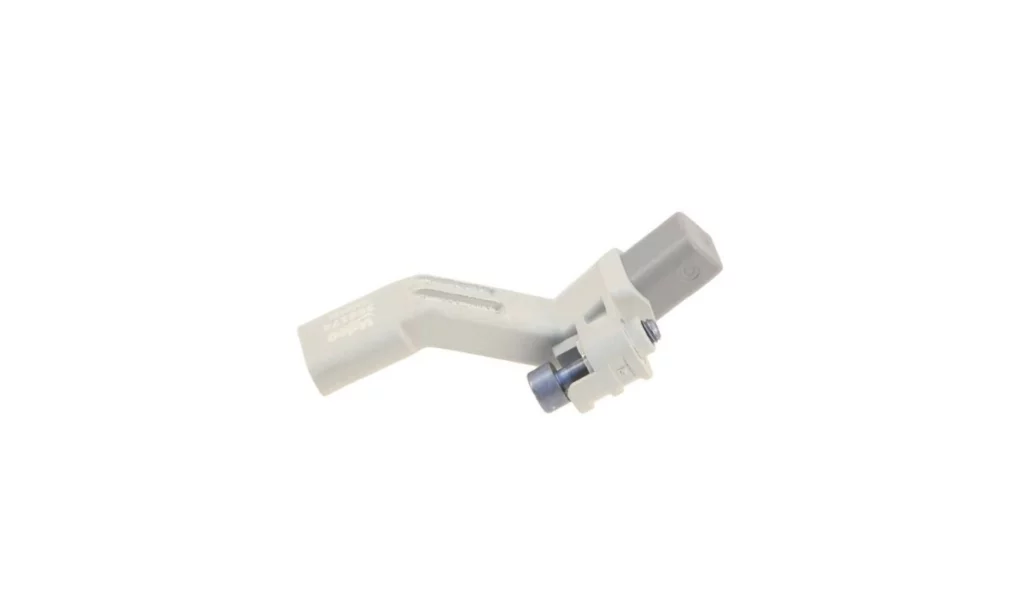
Crankshaft position sensor from Valeo
Select the appropriate voltage and time setting on the oscilloscope and turn it on. With the engine idling in park or neutral, observe the waveform pattern displayed on the oscilloscope screen.
Monitor any unexpected voltage spikes or glitches in the waveform pattern. If the signal is good, it’s time for a wiggle test. Gently manipulate the wiring harness and connector associated with the CKP sensor. This test will help you determine whether the issue is a loose connection or a faulty sensor.
Test the CPS
To correctly diagnose the P0339 code by testing it, consider the criteria for the two most used crankshaft position sensors (CPS) types: inductive and Hall-effect.
Measure the inductive sensor’s resistance using a multimeter in resistance (ohm) mode. Remove the sensor, attach the multimeter test leads to the sensor terminals, and look for a resistance value that complies with the manufacturer’s standards. Any significant difference indicates a malfunctioning sensor.
On the other hand, refrain from measuring the Hall Effect sensor’s resistance, as this could harm it. Rather, use an oscilloscope to confirm that the sensor generates a digital square wave signal while the engine is running to assess the sensor’s functionality. This method ensures that both kinds of sensors are successfully and safely tested.
Checking Sensor Wheel Condition
Inspect the condition of the sensor wheel. While uncommon, this component can become dirty or sustain damage, particularly in manual transmission vehicles. Ensuring the sensor wheel is clean and intact is essential for accurate crankshaft position sensing and for addressing potential causes of the intermittent circuit issue.
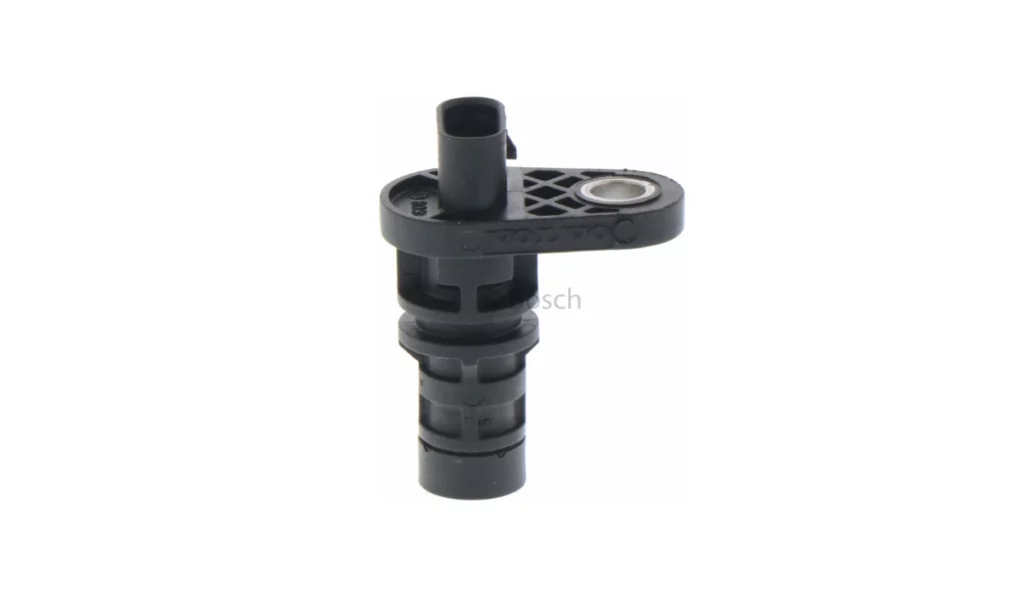
Crankshaft position sensor from Bosch
Fixing P0339 Code through DIY Crankshaft Position Sensor Replacement
If the crankshaft position sensor appears to be the exact cause of the P0339 code, it’s best advisable to replace it. To replace the CPS, follow these steps.
Safety Precautions
- Park your vehicle on level ground
- Turn off the engine
- Disconnect the negative terminal of the battery
- Raise the vehicle front (if needed)
- Work in a well-ventilated area
- Use your PPE, such as gloves and goggles
Tools and Materials Needed
- Ratchet and socket set
- Combination spanner set
- Pliers set
- Screwdriver set
- Jack and jack stands or ramps (if necessary)
- Clean cloth or shop towel
Step-by-step guide
Step 1 — Locate the CPS
Open the hood and locate the Crankshaft Position Sensor (CPS). The CPS is typically located near the crankshaft, either behind the crankshaft pulley or between the transmission and engine. Refer to your vehicle’s service manual for the exact location.
Step 2 — Access the old CPS
Depending on the sensor location, you may need to remove other components or heat shields for access.
Step 3 — Remove the electrical connectors
Once you access the CPS, disconnect the electrical connector attached to the sensor.
Step 4 — Remove the Old Sensor
Use the appropriate wrench or socket to remove the mounting bolts securing the sensor. Carefully extract the old sensor from its location, wiggling or gently prying it if necessary. Note that some sensors may include a spacer; ensure it is removed along with the sensor during extraction.
Step 5 — Install the New Sensor
Compare the new sensor with the old one to ensure they are identical. Insert the new sensor into place and hand-tighten the mounting bolts. Install the spacer if removed earlier when the old CPS was extracted. Use a torque wrench to tighten the bolts to the specified torque. Be careful not to over-tighten.
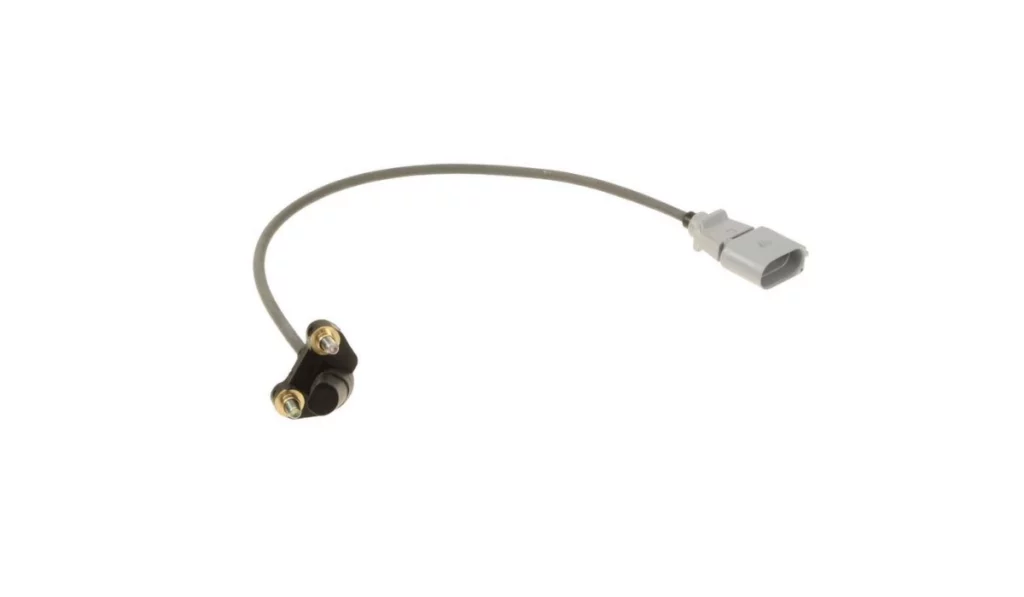
Genuine Audi/VW crankshaft position sensor
Step 6 — Reconnect the Electrical Connector
Attach the electrical connector to the new sensor until you hear a clicking sound, which indicates that it is sitting perfectly in its place.
Step 7 — Testing
Start the engine and ensure it runs smoothly without warning lights on the dashboard. Use an OBD-II scanner to clear the trouble code (P0339).
Step 8 — Final Checks
Double-check all connections and ensure no tools or parts are left in the engine bay. Take a short test drive to confirm that the issue has been resolved.
How much does it cost to fix a P0339 code?
The cost varies depending on factors like the vehicle’s make and model. On average, the price of CPS may range from as low as $30 to as high as $300 depending on the parts brand and the car’s make and model. This excludes the labor charges. However, the cost of fixing a P0339 code via CPS sensor replacement can be reduced significantly if you implement DIY techniques and perform the repair yourself.
Address Wiring Issue
If CPS is working properly but the P0339 code is linked to the wiring and connector, consider repairing the wiring. If the repairs are not deemed useful, replace the wiring harness and connectors completely.
Can the P0339 code be fixed without replacing the crankshaft position sensor?
It depends on the root cause of the fault. The necessity for replacement depends on the underlying cause of the fault. Suppose the Diagnostic Trouble Code (DTC) is triggered by an issue with the wiring while the sensor and other related components are in good working order. In that case, repairing the wiring issue may clear the code without requiring sensor replacement. However, if diagnostics confirm that the sensor is defective, replacing it is unavoidable to restore proper engine function.
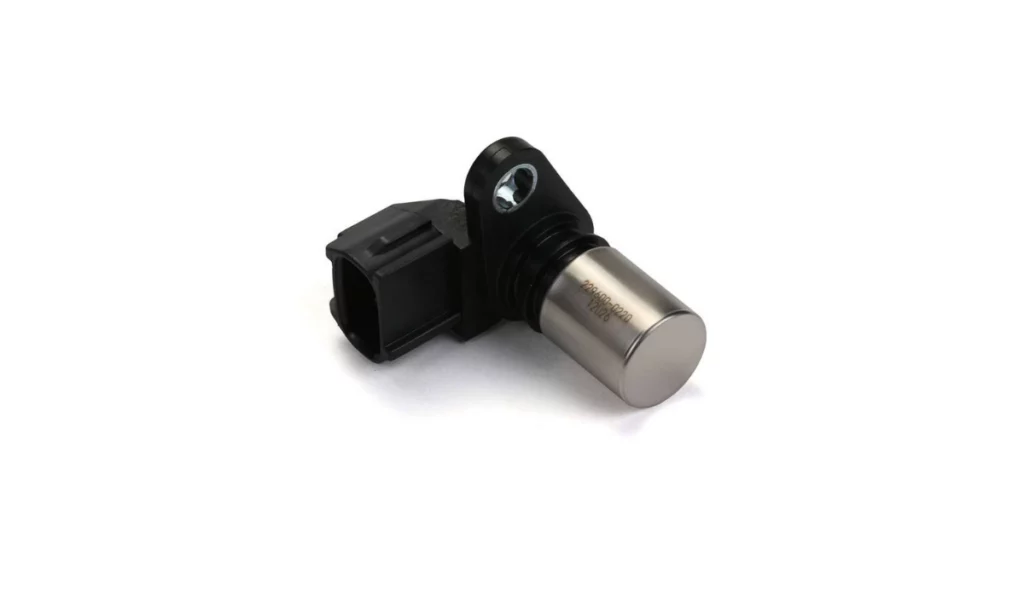
Crankshaft position sensor from Denso
Fix the PCM
Rarely, if both the wiring harness and sensor are working properly, the PCM may be the actual cause of the problem. In such a scenario, consider reprogramming the PCM. This will correct any communication error. If the code persists even after reprogramming, replace the PCM completely.
Maintenance Tips
Fixing the P0339 code is not the end solution; your vehicle needs constant care to function flawlessly, which can be done with maintenance. Here are some maintenance tips.
Address Oil Leaks
Addressing oil leaks quickly is essential for CKP sensors near the flywheel. Oil accumulation around the sensor can interfere with its proper functioning, leading to potential issues with signal transmission to the engine control module.
Regular Cleaning
Periodically clean the CKP sensor to remove accumulated debris and gunk. Dirt and contaminants can build up on the sensor over time, affecting its performance. Regular cleaning helps maintain optimal sensor functionality and ensures accurate crankshaft position detection, contributing to smooth engine operation.
Fix the P0339 Code With High-quality CKP Sensors From eEuroparts.com.
Enhance your vehicle’s performance and reliability with eEuroparts.com’s genuine and OEM crankshaft position sensors. We offer top-notch solutions for issues like the P0339 code, ensuring seamless engine operation.
At eEuroparts.com, we recognize the significance of premium components for optimal vehicle functionality. That’s why we maintain a diverse inventory of crankshaft position sensors to cater to the needs of automotive enthusiasts like you.
Should you encounter the P0339 code, our stock comprises crankshaft position sensors sourced from reputable brands to address the issue effectively. Explore our comprehensive range of crankshaft position sensors and other maintenance parts needed to keep your vehicle in top condition: all available at eEuroparts.com. Trust us to raise your vehicle’s performance and reliability to new heights.

